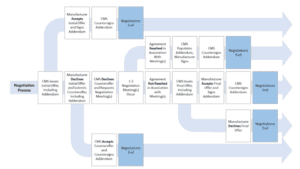Your 9-Step Guide to Effective Time Blocking for Enhanced Productivity

Do you always have a pile of pending work that seems unending despite your best efforts? Do you feel you are always running short on time despite putting hours on end to finish your assigned tasks or tick the items off your to-do list? If yes, it’s time to start using a schedule that uses “time blocking”. Some who use this technique swear by its efficiency and even go on to proclaim that a 40-hour time-blocked work week delivers output similar to what you will get with an unstructured 60+ hour work week.
Understanding Time Blocking
Time blocking refers to dividing your day into manageable blocks of time, where a particular task or a group of tasks is assigned to each block that you need to finish. Instead of feeling anxious about an open-ended list of tasks to complete, having a concrete schedule will let you plan better regarding what you will work upon and when.
Time blocking is an efficient time management tool. The key to making the most of it lies in prioritising your to-do list in advance. You should stick to a weekly review and consider what’s coming up for the week ahead, which will let you plan your daily time blocks. At the end of each workday, you should check any tasks you couldn’t finish, along with any new tasks that have come your way, to fine-tune your time blocks for the rest of the week accordingly.
At the start of a week or even your workday, having time blocked in advance will help you focus better on your tasks. This is in contrast to constantly worrying about and making choices regarding what to finish now and what to postpone. To be optimally productive, you simply need to stick to your time-blocked schedule. If you get distracted or off-task, you will just need to take a glance at your schedule to get back on track and accomplish the tasks for which you had blocked off time.
Ready to begin?
9 Steps to Effective Time Blocking
1. Identify Your Tasks
Planning your time blocks starts with identifying what you need to accomplish on a given day or week. You can make a to-do list of all tasks you have to work upon in a particular week and group tasks based on whether they are repetitive, need extensive research, or are urgent. Once you have considered your tasks to structure your day or week, you can chalk out activities on how to handle them timely.
2. Prioritise Them
Creating a list of your top priorities is crucial for effective time blocking. You need to decide the reason behind blocking time. It could be to get more time for focused, deep work or reduce the time you spend browsing social media between work or taking non-urgent phone calls. Knowing your top priorities will let you determine what should make it into your schedule for that day or week and what else can be postponed being handled later.
3. Estimate the Completion Time of the Tasks
You will need to make a rough estimate of the time you will take to complete the tasks on your to-do list. Ideally, you should give yourself at least twice or thrice the amount of time you believe you will need to finish a task. The objective of time blocking is to let you control your tasks and work productively, not feel overwhelmed with all that’s pending. So, it pays to start slow and steady.
4. Identify When You Are Most Productive
You can make your time blocks more effective by aligning the work to your productivity preferences. For instance, if you feel most energised and focused in the morning, you should consider scheduling focused work that needs deep research. Again, if the afternoons are when you feel sleepy, you can schedule answering emails or routine meetings during that period.
5. Group Meetings If You Can
Instead of having meetings spread throughout the day that hinder your productivity, you should have time blocks for meetings. Scheduling meetings close to one another with a few minutes’ breaks in between can let you handle the urgent things and even rest and recharge during the breaks, thus freeing the rest of your day for more focused work.
6. Schedule Your Time Blocks
After prioritising your tasks and identifying when you are at your productive best, you should schedule and set your time blocks. Note your priorities for the day and set aside dedicated focus time for each group of tasks featured in your work calendar. You can come back to tasks more than once in a day, say by scheduling three-to-four-time blocks to check and reply to messages.
7. Keep It Flexible
Remember that time blocks are there to help you work efficiently, not overwhelm or overpower you. Keep them flexible, so you have time to deal with unwanted or sudden distractions or unexpected tasks. For example, your CEO may call an urgent meeting all of a sudden, which will eat up 30 minutes off your day’s schedule. It could even be handling an emergency at home that makes you reach your office late. Having flexible time blocks with adequate buffer ensures you can deal with sudden interruptions or unexpected work without worrying much about completing the rest of your day’s tasks.
8. Remember to Schedule Downtime
Just like you schedule dedicated time for work, you should create time blocks for personal activities and stick to them. From scheduling lunch and time blocking for quick breaks to handling everyday activities like a late evening workout, going food shopping, or curling up on the sofa with your favourite book, all are equally essential tasks. You could leave a personal time block open to decide at that moment what you want to do with it – go on a walk, call your family or friends, meditate, or simply relax.
9. Review, Adjust, and Improve
It will take time to find a time blocking schedule that works perfectly for you. You should review your week to notice how it went and identify the tasks that were accomplished quickly and easily and the ones that needed more time. Such reviews will help you plan your following work week better. You just need to be patient to let your time blocking process develop with your varying requirements or diverse tasks assigned to you to help you arrive at a pattern that works best for you.
Final Words
Time blocking may not suit everyone. Yet, it’s a productivity tool that has worked wonders for many. There’s no harm in trying it for a few weeks and reviewing how it went. You may find it pretty effective in enhancing your productivity level and decreasing the distractions that were making it hard for you to focus and get the job done.
Remember a schedule tells time where to go and stops you asking where has time gone? So go ahead and try time blocking today!
Do you have an idea for a future blog or would like to share your thoughts on any particular topic?
It would be great to hear from you.
Take care, all the best.
Gary
Gary Pike, Founder & MD Right International
Tel: +441932 800222 Email: garypike@rightinternational.com
Right International is a market leading recruitment firm who specialise in sourcing the top talent across the claims and wider insurance market.




